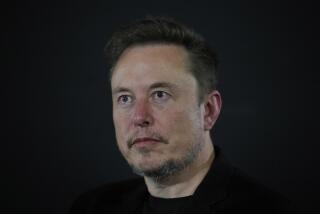Viacom vs. YouTube, Round 2
A federal appeals court has given Viacom a second chance to prove its copyright infringement claims against Google’s YouTube, reviving a high-stakes battle between entertainment companies and Internet entrepreneurs over “user-generated content” sites. The decision Thursday by the 2nd Circuit Court of Appeals was a partial win for both sides, but it left a few important issues unsettled as it tried to strike the right balance between competing interests.
Viacom — a giant entertainment conglomerate whose assets include Paramount Pictures and Comedy Central — alleged that YouTube made more than 60,000 snippets of its content available for free, damaging the market for its movies and TV shows. As with so many disputes between copyright holders and tech companies, Viacom’s lawsuit against YouTube hinges on the question of how much the website’s employees knew or should have known about the files that users were uploading. The 1998 Digital Millennium Copyright Act shields online companies from liability if they don’t have actual knowledge of copyright infringements and aren’t aware of “facts or circumstances” that make infringements apparent. But copyright holders and tech companies have fought strenuously over how broad those safe harbors should be.
Viacom and its allies in the case, including sports leagues, record companies and movie studios, point to internal YouTube e-mails and other evidence showing that company executives knew about pirated material on the site but didn’t act promptly to block or remove it. But a U.S. District Judge threw out Viacom’s claims almost five years ago, finding that YouTube qualified for the 1998 law’s safe harbors because it promptly removed the files that Viacom specifically identified as infringing.
The 2nd Circuit agreed with the lower court that knowledge or awareness of specific and identifiable infringements was required for a site to be held liable, and that the law does not require a company to actively monitor uploads (something that YouTube started doing shortly after Viacom filed suit). But it held that the court prematurely dismissed Viacom’s claims because a jury could have reasonably concluded that company executives knew “at least a handful” of specific clips were infringing.
It also said that the law doesn’t allow companies to turn a blind eye to evidence of infringements, although the panel didn’t explain how to avoid “willful blindness” other than by monitoring users. And it held that sites could be ineligible for safe harbors if they exert influence over the material users upload — for example, by reviewing them for compliance with design standards, or by actively encouraging infringements.
The appeals panel seemed to be trying to set narrower safe harbors, in response to copyright holders’ complaints that the lower court’s ruling upset the balance Congress had struck. In doing so, however, the 2nd Circuit raised new uncertainties about what sites must do to remain on the right side of the law. It’s safe to expect more litigation as the courts struggle to apply notions of knowledge, control and responsibility to the increasingly decentralized and automated world of the Internet.
More to Read
A cure for the common opinion
Get thought-provoking perspectives with our weekly newsletter.
You may occasionally receive promotional content from the Los Angeles Times.






